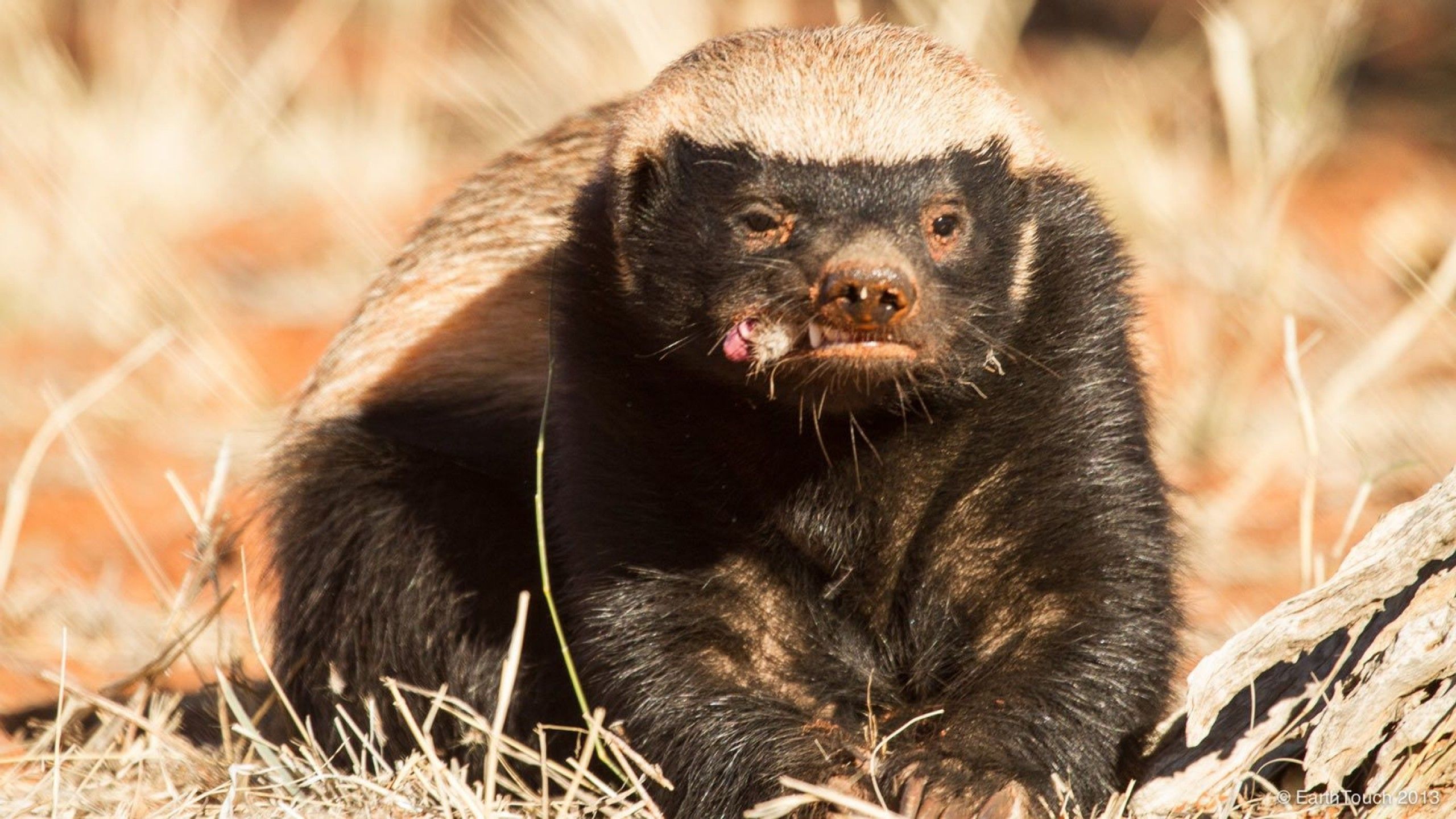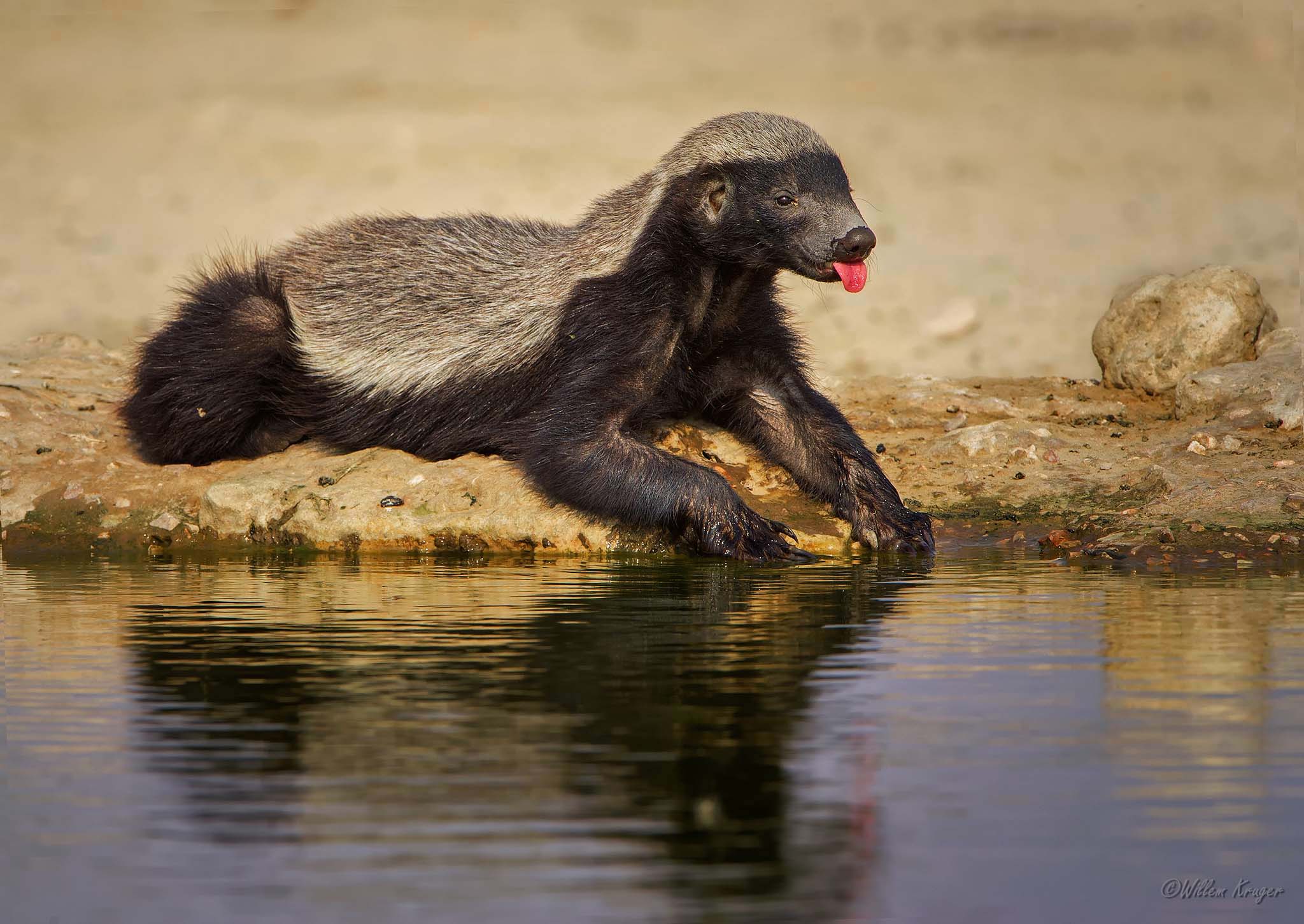 The honey badger, scientifically known as Mellivora capensis, is a remarkable and tenacious mammal native to Africa, Southwest Asia, and the Indian subcontinent. Known for its fearlessness, strength, and resilience, the honey badger has earned a reputation as one of the most formidable animals in the wild.
The honey badger, scientifically known as Mellivora capensis, is a remarkable and tenacious mammal native to Africa, Southwest Asia, and the Indian subcontinent. Known for its fearlessness, strength, and resilience, the honey badger has earned a reputation as one of the most formidable animals in the wild.
Honey badgers are part of the Mustelidae family, which includes weasels, otters, and ferrets. They have a distinctive appearance with a broad, flat body, short legs, and a thick, loose coat of coarse hair. The fur is predominantly dark, with a contrasting pale gray or white stripe running from the top of the head to the base of the tail. This unique coloration serves as a warning to potential predators and rivals of their fierce nature.
Despite their relatively small size, honey badgers possess incredible physical strength. They have powerful jaws and sharp teeth capable of crushing bones and tough hides. Their claws are long and curved, designed for digging and tearing through the hard ground or tree bark. These adaptations make them proficient hunters and foragers, able to take on a wide range of prey and food sources.
Honey badgers are omnivorous and highly opportunistic feeders. Their diet includes small mammals, birds, reptiles, insects, and carrion. They are particularly known for their fondness for honey and bee larvae, which they often raid from beehives. Their thick skin and tough fur provide protection against bee stings, allowing them to endure attacks from swarms of angry bees as they indulge in their sweet treat.
One of the most remarkable traits of the honey badger is its fearlessness. They are known to confront and fend off much larger predators such as lions, leopards, and hyenas. This bold behavior is partly due to their strong defensive capabilities, including sharp claws, powerful bites, and a highly developed sense of smell. Additionally, honey badgers have a specialized gland near their anus that secretes a foul-smelling substance, which they use to deter attackers.
Honey badgers are solitary animals, with males and females coming together only to mate. Females typically give birth to one or two cubs after a gestation period of about six months. The mother takes care of the young, teaching them essential survival skills, such as hunting and self-defense, until they are ready to fend for themselves.

In addition to their physical prowess, honey badgers are also known for their intelligence. They are skilled problem solvers, capable of using tools and manipulating their environment to access food. For example, they have been observed rolling logs, opening containers, and even using sticks to reach hidden prey. This resourcefulness further enhances their ability to thrive in various habitats, from savannas and grasslands to forests and mountains.
The honey badger’s reputation for fearlessness and resilience has made it a cultural icon in many societies. In African folklore, the honey badger is often depicted as a symbol of bravery and tenacity. Its tenacious nature has also inspired numerous sports teams and military units, which adopt the honey badger as a mascot or emblem to embody strength and determination.
Despite their formidable nature, honey badgers face several threats in the wild. Habitat loss due to human activities, such as agriculture and urbanization, poses a significant risk to their populations. Additionally, they are sometimes hunted or persecuted by farmers who view them as pests due to their tendency to raid poultry and livestock. Conservation efforts are crucial to ensure the survival of honey badgers and to maintain the ecological balance they help uphold.

Efforts to protect honey badgers include habitat conservation, research, and public education. By preserving their natural habitats and creating protected areas, we can help ensure that honey badgers have the space and resources they need to thrive. Research initiatives aimed at understanding their behavior, ecology, and population dynamics are essential for developing effective conservation strategies. Public education and awareness campaigns can help mitigate human-wildlife conflicts and promote coexistence.
In conclusion, the honey badger is a remarkable and resilient animal that embodies fearlessness and strength. Its unique adaptations and bold nature make it one of the most formidable creatures in the animal kingdom. Protecting honey badgers and their habitats is essential for preserving biodiversity and maintaining the health of ecosystems. Through concerted conservation efforts, we can ensure that future generations will continue to be inspired by the indomitable spirit of the honey badger.